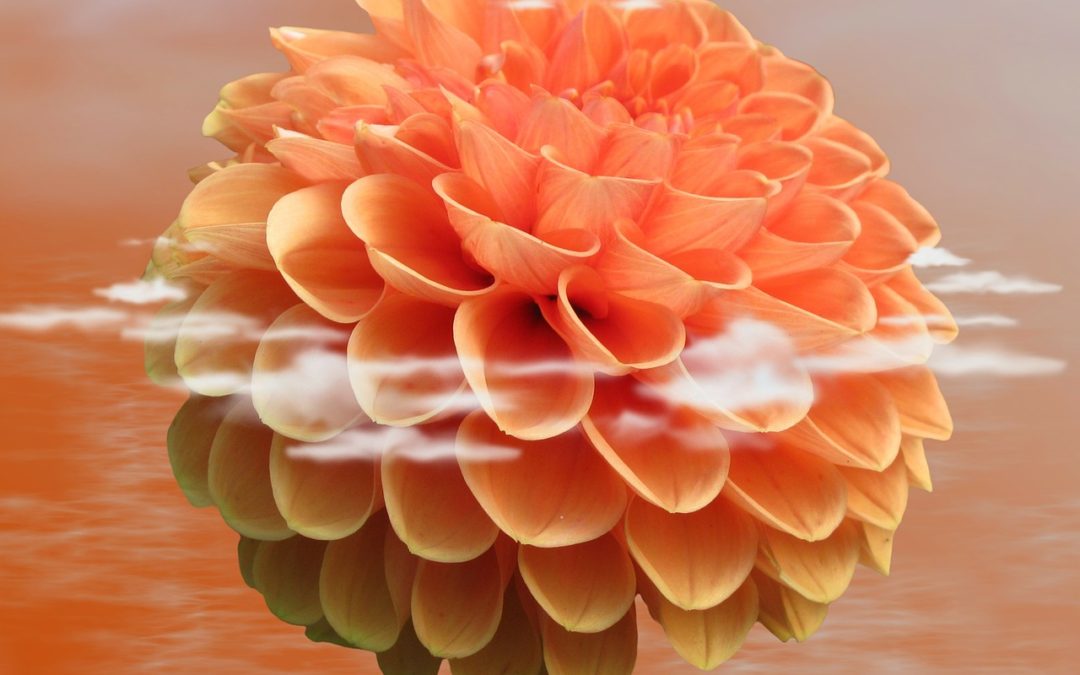(This blog on Bacterial Vaginosis is written primarily in the interest of Chinese Medicine Practitioners and Acupuncturists. For a more patient focused article on this topic, please see our page https://cgicm.ca/what-we-treat/infections/bacterial-infection/ )
Yuxiang Wang, R.Ac R. TCMP is dedicated to improving Chinese Medicine Gynecology in North America. She teaches in Toronto, Canada, online, and leads a yearly intensive in Mexico – details about her training on Treating Menopause in May 2020 at learningonvacation.com
Bacterial Vaginosis (BV) is inflammation of the vagina that can result in whitish vaginal discharge, fishy smell and itching. It is the most common form of vaginitis in North America. It is also referred to as nonspecific vaginitis or Gardnella vaginitis.
Bacterial Vaginosis is not a sexually transmitted disease, it is an opportunistic infection caused by an over production of naturally occurring bacteria of the vaginal area.
BV is an alteration of normal vaginal bacterial flora that results in the loss of hydrogen peroxide-producing lactobacilli leading to an overgrowth of predominantly anaerobic bacteria.
Anaerobic bacteria can be found in less than 1% of the flora of normal women. In women with BV, however, the concentration of anaerobes, as well as G. vaginalis and Mycoplasma hominis, is 100 to 1,000 times higher than in normal women. Lactobacilli are usually absent.
It is not known what triggers the disturbance of normal vaginal flora. It has been postulated that repeated alkalinization of the vagina, which occurs with frequent sexual intercourse or use of douches, plays a role. After normal hydrogen peroxide-producing lactobacilli disappear, it is difficult to reestablish normal vaginal flora, and recurrence of BV is common.
Studies have shown an association of BV with significant adverse sequelae. Women with BV are at increased risk for pelvic inflammatory disease, postabortal PID, postoperative cuff infections after hysterectomy, and abnormal cervical cytology.
Pregnant women with BV are at risk for premature rupture of the membranes, preterm labor and delivery, chorioamnionitis, and postcesarean endometritis. It is not known whether screening for, and treatment of BV will decrease the risk for these adverse sequelae.
Symptoms of Bacterial Vaginosis include:
- Whitish vaginal discharge
- Fishy smell in the vaginal area
- Possible mild itching
The flora of the vagina is influenced by the following factors:
- Hormones: Estrogen in particular can have an effect on the balance of the vagina
PH: The vagina is naturally acidic with a normal PH of 3.8 to 4.5. If the PH is disturbed and becomes too alkaline, anaerobic bacteria will overgrow.
- Smoking
- Birth control pills
- Diet
- Stress
Diagnosis:
Bacterial vaginosis is diagnosed on the basis of the following findings:
- a fishy vaginal odor, particularly noticeable following intercourse.
- vaginal discharge
- vaginal secretions are gray and thinly coat the vaginal walls
- the pH of these secretions is higher than 4.5 (usually 4.7 to 5.7) and
- the microscopy of the vaginal secretions reveals an increased number of clue cells
- leukocytes are conspicuously absent.
In advanced cases of BV, more than 20% of the epithelial cells are clue cells. There will also be a positive “whiff” test (* the whiff test is performed by mixing a sample of vaginal discharge with potassium hydroxide and smelling the sample for a characteristic fishy odor.). Culture of G. vaginalis is not recommended as a diagnostic tool because of its lack of specificity.
Treatment in Western Medicine:
Metronidazole is an antibiotic with excellent activity against anaerobes but poor activity against lactobacilli, is the drug of choice for the treatment of BV. A dose of 500 mg administered orally twice a day for 7 days should be used. Patients should be advised to avoid using alcohol during treatment with oral metronidazole and for 24 hours thereafter. There is also the option of Metronidazole gel, clindamycin cream or oral Clindamycin.
Etiology&Pathology in Chinese Medicine
Vaginitis mainly manifests with excessive vaginal discharge, pain, pruritus, and dyspareunia.
Chinese medicine relies on the nature of the vaginal discharge as a diagnostic tool. A large amount of vaginal discharge signifies deficiency of the Kidney and Spleen. Smelling and whitish or yellowish color indicate dampness or dampness heat; green color indicate Liver constraint. Deficiency of the
Kidney, Spleen and Liver leads to the production of internal heat and dampness, which pours downward into the reproductive tract. Usually it is Kidney and Liver deficiency that generates heat, while deficiency of the Spleen leads to dampness. Differentiation includes Damp-heat in Liver channel, Spleen deficiency and damp downward, and Liver and Kidney insufficiency. Bacterial Vaginosis is most commonly damp-heat downward or wet-toxin disturbance.
Treatment of Bacterial Vaginosis in Chinese Medicine
Damp-Heat Downward:
- yellowish vaginal discharge
- excessive discharge
- itching of vulvae and vagina
- red tongue
- slippery rapid pulse
Herb: Modified Zhi Dai Fang
Zhu Ling 20g, Fu Ling 20g, Che Qian Zi 15g, Zhe Xie 15g, Yin Chen 15g, Chi Shao 15g, Dan Pi 15g, Huang Bai 10g, Zhi Zi 10g, Nu Xi 10g.
Wet-toxin disturbance:
- pus-like vaginal discharge,
- stink smell,
- itching of vulva and vagina with swelling
- red tongue
- rapid pulse.
Herb: Modified Wu Wei Xiao Du Yin
Pu Gong Ying 20g, Ju Hua 20g, Jin Yin Hua 20g, Di Ding 20g, Tian Gui Zi 15g, Bai Hua She She Cao 15g, Cang Zhu 15g, Tu Fu Ling 15g.
External Treatment -Fumigation & Washing
Cang Zhu 10g, Huang Bai 10g, Niu Xi 10g, Ku Shen 9g, Yu Xing Cao 30g, Cook to get liquid for fumigation and washing
Ku Shen 30g, Zao Xiu 15g, Huang Bai 15g, Tu Fu Ling 20g, Sheng Gao Cao 10g. Cook to get liquid for fumigation and washing.
- Acupuncture: GB 26, RN 3, SP 9, UB 34, LV 2
- Vaginal Douche: Cang Zhu 15g, Bai Bu 15g, She Chuang Zi 15g, Huang Bai 15g, Ku Shen 15g, Lian Qiao 15g, Jing Jie 10g, Ku Fan 15g, Tu Jin Pi 15g. Cook 250 ml decoction, for vaginal douche, once a day, 5-10 day course.
Lifestyle Recommendations
To help promote a healthy vaginal balance, the following lifestyle recommendations should be followed:
- Do not wash the vaginal mucous membranes with soap. Mucous membranes are not meant to come into contact with soap. The skin is able to handle contact with soap because of the sebaceous glands (oil glands) since they offer protection against the drying effects of soap. The use of soap can be a factor with recurring vaginal infections. Also avoid using highly perfumed products.
- No intercourse during period time. Reduce frequency of sexual activity, do not have multiple sexual partners
- Wear loose fitting underwear and pants. Bacteria feed off of warmth and moisture. Air flow will help keep the vaginal area healthy.
- After going to the washroom, wipe from front to back to avoid spreading bacteria from the anus to the vaginal area. This bacteria can also lead to a urinary tract infection.
- Do not leave tampons in place for too long.
- Eat well balanced and include foods which resolve dampness and heat from the body. It is essential to avoid excessive amounts of dairy products, greasy foods and sugar
Yuxiang Wang, R.Ac R. TCMP is dedicated to improving Chinese Medicine Gynecology in North America. She teaches in Toronto, Canada, online, and leads a yearly intensive in Mexico – details about her training on Treating Menopause in May 2020 at learningonvacation.com
This blog is written primarily in the interest of Chinese Medicine Practitioners and Acupuncturists. For a more patient focused article on this topic, please see our page https://cgicm.ca/what-we-treat/infections/bacterial-infection/

